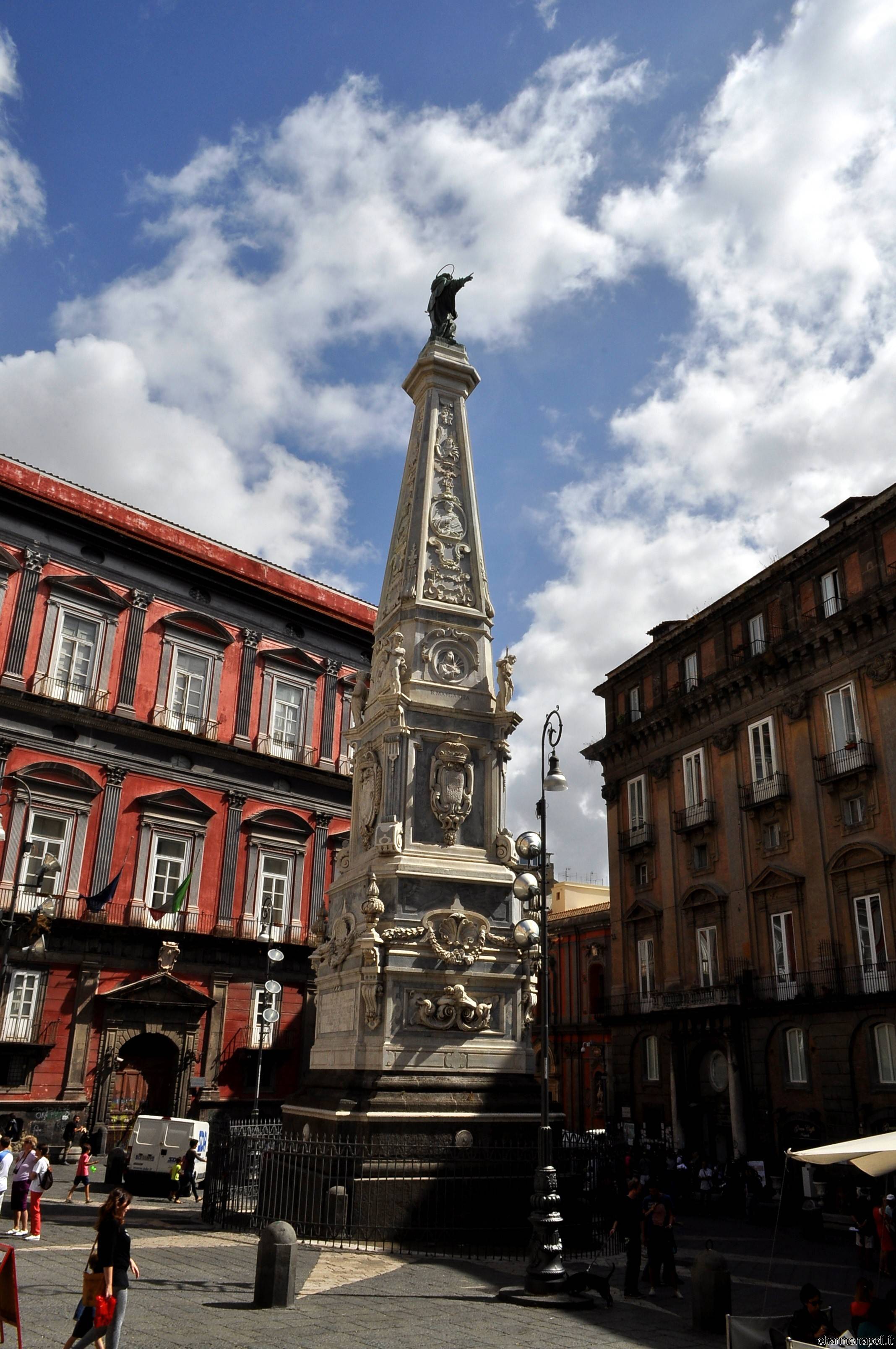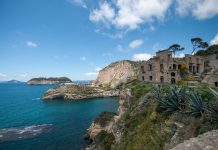(follow from first part).. One in particular, that of the famous Marianna ’a capa ’e Napule (“the head of Naples”), the face of Naplkes par excellence. In Palazzo San Giacomo, the seat of Naples municipality, among two staircases leading to the upper floors there is a pedestal with a big Greek statue representing the head of a woman. According to the tradition, this figure today identified with Naples itself, would represent Parthenope the Siren.
It seems that the statue was excavated at the end of XVI century in Anticaglia (superior Decuman) and then placed near the church San Giovanni a Mare, at few steps from piazza Mercato, where she was the silent testimony of the revolt of Masaniello, during which somebody broke her nose. It was moved in front of Avvocata church, and then restored in 1879, when it became part of Villa Filangieri Museum and it was definitively placed in Palazzo San Giacomo. A copy can be admired in the courtyard of San Giovanni a Mare church.[charme-gallery] The name “Donna Marianna” was probably given to the head during XIX century, when the head was placed in front of Santa Maria dell’Avvocata church, where also stood a statue of Saint Anna. According to this version, the two names of Saint Maria and Saint Anna were mixed together. Others think that this name was given to the statue to make it is a symbol of freedom, like the French Marianne of the Revolution (1848). Anyway, that stone head has been considered by the sons of Parthenope as belonging to the mythical founder of their city. Another monument attest the celebration of the Siren in Naples, the fabulous sculpted complex in piazza Sannazzaro in Mergellina, the Fountain of the Siren,was built more than a century ago, in 1869, by the sculptor Onofrio Buccini with the collaboration of a young Francesco Jerace. Until 1924 it stood into the garden of the train station of piazza Garibaldi, then it was moved in its actual place.[charme-gallery]It is composed by an elliptic tank with a rock in the middle on which are placed a horse, a lion, a dolphin, and a turtle together with floral elements. Above all, her majesty the Siren. Her figure can be found in other two famous fountains in Naples: the first is placed in the brand new Garibaldi station: a modern art complex mixing metal and water. Unveield few years ago, it stands close to the rails, in the waiting hall of the Central Station.
The other one, with a great artistic and historical value, is the fountain of the Spinacorona, commonly called of the “tits”, in the historical centre, near the church Santa Caterina della Spina Corona. Its origin is unknown, although it is mentioned in a document dating back to the end of the XVI century. It was restored and modified by the will of the Viceroy don Pedro de Toledo, following a sketch by Giovanni da Nola, in the first half of the XVI century, as testified by the crest of the king Charles V.
It is composed by a rectangular tank in white marble, decorated with high-reliefs, garlands, and crests of the Viceroy, and completed by the representations of Vesuvius and Parthenope, who extinguishes the flames of the volcano with the milk coming out from her breast. Today we can admire only a copy of the original sculpture made by Achille D’Orsi. The original statue is kept in the National Museum of San Martino. The image of Spinacorona strongly recalls the Classical iconography, thus testifying an age-old relationship between Neapolitans and their famous ancestor.

 Italiano
Italiano














